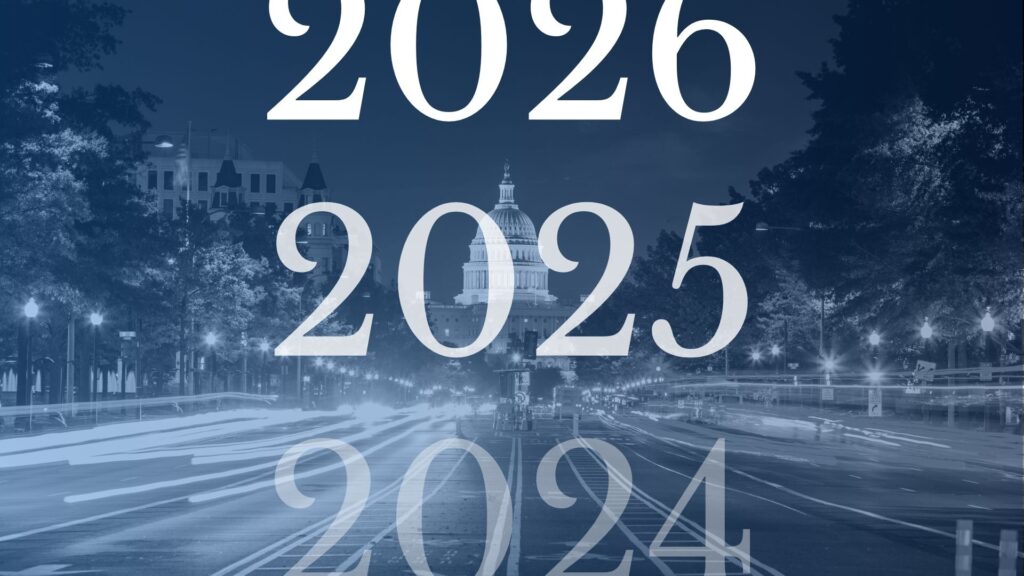- News
New Year; New Debt Ceiling
What the latest debt limit approach means for municipal market and its stakeholders.

By Brian Egan, Director of Government Affairs, NABL
In June 2023, Congress passed the Fiscal Responsibility Act (FRA)―which, among other things, suspended the debt ceiling through January 1, 2025. In a letter to Congress last month, Treasury Secretary Yellen announced that due to several technicalities in the federal budget, the United States’ debt load recently decreased by about $54 billion. The letter went on to explain that the decrease would allow the federal government to fully maintain operations for a bit longer beyond the January 1 date set in statue. Yellen estimates that the federal government should be able to continue its operations through January 14 – 23 but notes estimating these dates is an imprecise science.
Once the federal government hits the debt limit, Yellen (or whoever leads Treasury at that time) will likely issue an order to begin implementing extraordinary measures, which are essentially accounting maneuvers that allow the federal government to temporarily continue its operations with minimal impact even after the debt ceiling has been reached. Extraordinary measures offer only an interim solution, and Congress will almost certainly need to address the debt ceiling to avoid potentially catastrophic scenarios.
Bond counsel and municipal market participants should note that extraordinary measures have historically included the suspension of new sales of State and Local Government Series (SLGS) securities. Treasury, however, only suspended the SLGS window in 2023 after four months of extraordinary measures. The delayed suspension of SLGS was likely due to the limited amount of SLGS in the market following the elimination of advance refunding bonds in 2017 and in response to municipal market outcry during past suspensions.
The Road Ahead
In December, President-Elect Trump urged House Republicans to push for a solution to the upcoming debt ceiling during negotiations to continue FY2025 appropriations. Congress ultimately passed a second FY2025 continuing resolution (CR) that did not include a provision to address the debt ceiling, but congressional Republicans agreed to address the debt ceiling early in 2025. Any path forward faces tricky political realities.
- Legislation through Normal Order: Members of Congress have significant latitude on how to address the debt ceiling if they pass legislation through normal order. They could agree to suspend the debt ceiling until some date in the future, which allows members of Congress to avoid voting on a measure with a specific number added to the federal debt. They could also choose to eliminate the debt ceiling altogether. Passing legislation through normal order, however, requires a sufficient number of Democratic votes to invoke cloture and avoid a filibuster in the Senate. Democrats would likely require significant concessions for their support.
- Passing Legislation through Reconciliation: Republicans can also raise the debt ceiling alone through budget reconciliation, but such a route introduces several other obstacles. For starters, reconciliation would require the debt ceiling to be raised by a specific dollar amount, which remains less politically palatable than suspending the ceiling to a specified date. Republicans also hold an extremely narrow majority in the House and would need to avoid virtually any defections to pass legislation without Democrat support. More importantly, congressional Republicans can only use reconciliation once per budget cycle, meaning Congress would likely want to include many more provisions unrelated to the debt ceiling on any reconciliation bill moving early this year. A reconciliation bill could be seen as a legislative vehicle for the incoming Administration energy and immigration policy goals. It could also be used to address the expiring provisions of the Tax Cuts and Jobs Act of 2017. Adding these unrelated provisions would add significant political challenges to maintaining the full caucus’s support under an immensely important time constraint.
The Bottom Line
While extraordinary measures will likely begin in mid- to late-January, Congress likely has additional time to address the debt ceiling before reaching the dreaded x-date―the projected date on which the federal government would be unable to meet its debt servicing obligations without drastic measures.
NABL will continue to update members as negotiations on the debt ceiling proceed, but in the interim, here are the key points to know:
- Unless the incoming Congress rapidly addresses the debt ceiling, it is likely that the Treasury Department will need to implement extraordinary measures sometime in mid- to late-January.
- Those extraordinary measures may or may not include the suspension of new SLGS. Even if the first announcement of extraordinary measures does not include suspending SLGS, Treasury may decide to revise the measures to include suspending new SLGS at a point in the future depending on how long Congress takes to implement a more sustainable solution.
- The path ahead for Congress to address the debt ceiling remains uncertain and politically complicated. The route chosen to address the debt ceiling could also have major implications for and define the contours of the broader agenda of the 119th Congress, including what legislation is passed to address the expiring provisions of the Tax Cuts and Jobs Act (TCJA) of 2017.
